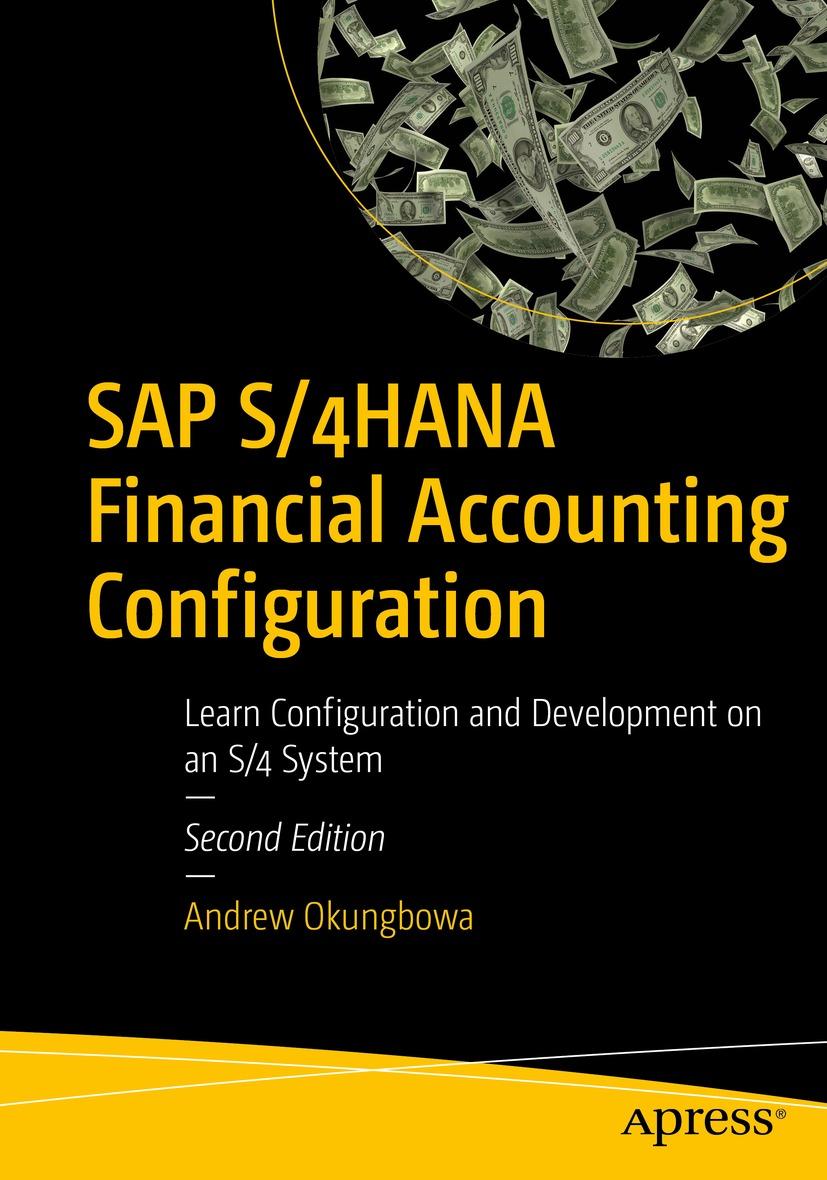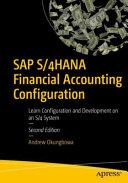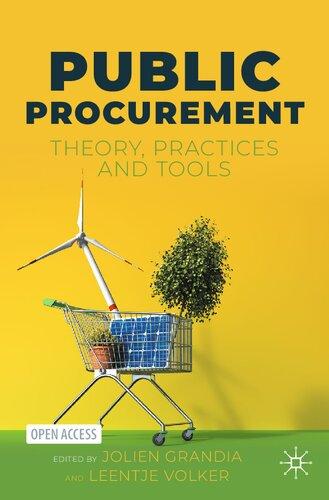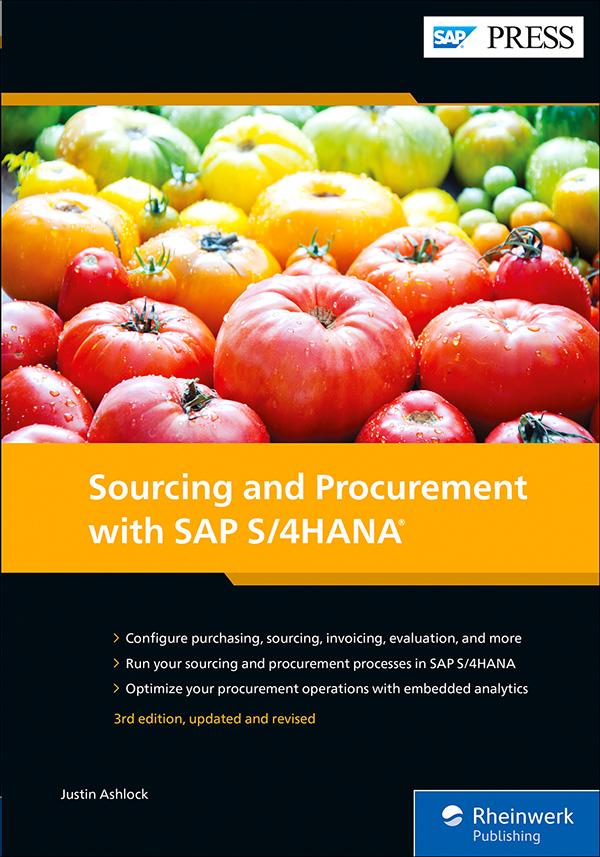Notes on the Screen Presentation
You are reading this e-book in a file format (EPUB or Mobi) that makes the book content adaptable to the display options of your reading device and to your personal needs. That’s a great thing; but unfortunately not every device displays the content in the same way and the rendering of features such as pictures and tables or hyphenation can lead to difficulties. This e-book was optimized for the presentation on as many common reading devices as possible.
If you want to zoom in on a figure (especially in iBooks on the iPad), tap the respective figure once. By tapping once again, you return to the previous screen. You can find more recommendations on the customization of the screen layout on the Service Pages.
Table of Contents
Notes on Usage
Table of Contents
Foreword
Preface
1 Introduction to Sourcing and Procurement
1.1 Sourcing and Procurement: From Basic to Strategic
1.1.1 Sourcing
1.1.2 Operational Procurement
1.2 Sourcing and Procurement from End to End
1.2.1 Ideal Procurement
1.2.2 Source-to-Pay and Procure-to-Pay
1.2.3 Key Process Areas
1.3 Procurement with SAP S/4HANA
1.3.1 Multitenant Cloud versus Single-Tenant Environment for ERP Systems
1.3.2 Strategic Sourcing
1.3.3 Procurement
1.3.4 Accounts Payable and Invoicing
1.3.5 SAP Fiori Roles and Applications
1.4 Summary
2 Implementation Options
2.1 Implementation Overview
2.1.1 Deployment Options
2.1.2 Cloud
2.1.3 On-Premise
2.1.4 New Implementation versus System Conversion
2.2 On-Premise SAP S/4HANA
2.2.1 Complete Functional Scope
2.2.2 Installation
2.2.3 Activated Appliance
2.2.4 Information Technology Considerations
2.2.5 Integration Options
2.2.6 System Conversion to SAP S/4HANA
2.3 SAP S/4HANA Cloud
2.3.1 SAP Best Practices Scope
2.3.2 Information Technology Considerations
2.3.3 Standard Integration and Customization
2.4 SAP Ariba Central Procurement, Private Cloud Edition
2.5 Quick Start Approaches and Materials for SAP S/4HANA
2.5.1 Prebuilt Content and Templates
2.5.2 SAP Best Practices
2.5.3 Appliance Model and Enterprise Management Layer
2.5.4 SAP Activate
2.6 Summary
3 Organizational Structure
3.1 SAP S/4HANA Enterprise Management Organization Objects
3.2 SAP S/4HANA Sourcing and Procurement–Specific Organization Structure Objects
3.3 Company Code
3.4 Plants
3.5 Storage Locations and Warehouses
3.5.1 Storage Location
3.5.2 Warehouse Creation
3.6 Purchasing Organizations
3.7 Purchasing Group Creation
3.8 Summary
4 Master Data
4.1 Material Masters and Material Groups
4.1.1 Activating a Material Master Field
4.1.2 Creating a Material Master
4.1.3 Creating a Material Group
4.1.4 Lean Services
4.1.5 Configuring Lean Services: Product Services Type (SERV)
4.1.6 Select Material Master Configuration Options
4.1.7 Material Master Field Character Expansion in SAP S/4HANA
4.2 Batch Management and Serialization
4.2.1 Configuring Batch Numbers
4.2.2 Configuring Serial Numbers
4.3 SAP S/4HANA Business Partner Model
4.3.1 Suppliers as Business Partners
4.3.2 Loading Supplier Records in SAP S/4HANA
4.3.3 Setting Up the Supplier Master
4.3.4 Performing Customer/Vendor Integration
4.4 Summary
5 Operational Procurement
5.1 What Is Operational Procurement?
5.2 Self-Service Procurement
5.2.1 Creating a Requisition or Shopping Cart in SAP S/4HANA
5.2.2 Carbon Footprint Tracking
5.2.3 Advanced Intercompany Sales
5.2.4 Confirmation and Return Delivery
5.2.5 Shopping Cart versus Requisition-to-Pay and Migrating SAP SRM Shopping Carts
5.2.6 Workflow
5.2.7 Machine Learning–Based Purchasing Functionality via SAP Business Technology Platform
5.3 Requirements Processing in SAP S/4HANA Sourcing and Procurement
5.4 Purchase Order Processing
5.5 Service Purchasing and Service Confirmation
5.6 Purchase Order Collaboration
5.7 Configuring Operational Procurement
5.7.1 Self-Service Procurement Requisitioning
5.7.2 Machine Learning–Based Procurement Functionality
5.7.3 Requirements Processing
5.7.4 Purchase Order Processing
5.7.5 Purchase Order Collaboration
5.7.6 SAP SuccessFactors
5.8 Summary
6 Automated and Direct Procurement
6.1 What Is Automated and Direct Procurement?
6.2 Materials Requirements Planning
6.2.1 MRP in SAP ERP versus SAP S/4HANA
6.2.2 Predictive MRP
6.2.3 SAP Fiori Apps for MRP
6.3 Forecasting and Planning
6.3.1 Forecast Planning
6.3.2 Reorder Point Planning
6.3.3 Time-Phased Planning
6.3.4 Forecast Collaboration
6.4 Contract and Source Determination
6.4.1 Purchasing Information Record
6.4.2 Source List
6.4.3 Quota Arrangement
6.4.4 Scheduling Agreement
6.4.5 Scheduling Agreement Release Collaboration
6.4.6 Blanket Purchase Order
6.4.7 Purchase Orders and Multitier Purchase Orders
6.4.8 Subcontracting
6.4.9 Consignment Stock
6.4.10 Consignment Orders
6.4.11 Quality Management Collaboration in SAP Business Network Supply Chain Collaboration
6.4.12 SAP Supply Base Optimization
6.5 Configuring Automated and Direct Procurement
6.5.1 Master Data
6.5.2 Document Types
6.5.3 Forecast Planning
6.5.4 Purchase Info Records
6.5.5 Source Lists
6.5.6 Quota Arrangements
6.6 Industry-Focused Solutions for Direct Procurement
6.6.1 CATENA-X
6.6.2 SAP Enterprise Product Development
6.6.3 SAP S/4HANA for Field Equipment and Material Logistics Planning and Execution
6.7 Integration with SAP Ariba and SAP Business Network
6.8 Summary
7 Inventory Management
7.1 What Is Inventory Management?
7.2 Stock Management in SAP S/4HANA
7.2.1 Material Identification
7.2.2 Location of the Stock
7.2.3 Usability of the Stock
7.2.4 Ownership of the Stock
7.2.5 Batch Identification
7.2.6 Serial Number Identification
7.3 Goods Movements
7.3.1 Goods Receipts
7.3.2 Goods Issues
7.3.3 Stock Transfers
7.3.4 Transfer Postings
7.4 Physical Inventory
7.4.1 Create Physical Inventory Documents
7.4.2 Schedule Physical Inventory Document Creation
7.4.3 Manage Physical Inventory Count
7.4.4 Manage Physical Inventory Documents
7.4.5 Cycle Counting—Classification
7.4.6 SAP GUI for HTML Apps
7.5 Reporting in Inventory Management
7.5.1 Inventory Overview Pages
7.5.2 Goods Movement Reporting Apps
7.5.3 Stock Balances Reporting Apps
7.5.4 Monitoring Financial Inventory Values Apps
7.5.5 Inventory Management Object Pages
7.5.6 Inventory Management Analytics
7.6 Configuring Inventory Management
7.6.1 General Configuration Elements
7.6.2 Goods Receipts and Goods Issues
7.6.3 Movement Types
7.6.4 Stock Transport Orders
7.6.5 Physical Inventory
7.7 Summary
8 Contract and Scheduling Agreement Management
8.1 What Is Contract and Scheduling Agreement Management?
8.1.1 Types of Purchase Contracts
8.1.2 Manage Purchase Contracts
8.1.3 Mass Changes to Purchase Contract
8.2 Contract Consumption
8.2.1 Value Contract Consumption
8.2.2 Quantity Contract Consumption
8.3 Contract Reporting and Analytics
8.3.1 Unused Contracts
8.3.2 Off-Contract Spend
8.3.3 Contract Leakage
8.3.4 Purchase Contract Items by Account Assignment
8.3.5 Monitor Purchase Contract Items
8.3.6 Contract Expiry
8.4 Configuration
8.4.1 Configuring Contracts
8.4.2 Manage Workflows for Purchase Contracts
8.5 Scheduling Agreement
8.5.1 Scheduling Agreement Types
8.5.2 Managing and Creating Purchase Scheduling Agreements
8.5.3 Monitor Purchase Scheduling Agreement Items
8.6 Customizing Scheduling Agreements
8.6.1 Define Document Types
8.6.2 Define Number Ranges for Purchase Scheduling Agreements
8.6.3 Allowed Item Categories
8.6.4 Maintain Release Creation Profile
8.7 Integrating with SAP Ariba Contracts
8.8 Summary
9 Enterprise Contract Management and Assembly
9.1 What Is Enterprise Contract Management and Assembly?
9.2 SAP Fiori Apps for Enterprise Contract Management Overview
9.2.1 Home Page and Enterprise Contract Management Overview
9.2.2 Manage Contexts
9.2.3 Categories for Legal Content
9.2.4 Manage Legal Documents
9.2.5 Manage Legal Tasks
9.2.6 Request Legal Contract
9.2.7 Manage Legal Transactions
9.2.8 Manage Workflow Templates
9.3 Customizing Enterprise Contract Management
9.3.1 Number Ranges
9.3.2 Reminder Types
9.3.3 Date Types
9.3.4 Internal Contacts
9.3.5 Entity Types
9.3.6 External Contacts
9.3.7 Technical Types for Linked Object Types
9.3.8 Linked Object Types
9.3.9 Content Types
9.3.10 Document Stamps
9.3.11 Profiles
9.3.12 Document Types
9.3.13 Background Job Definitions
9.4 Summary
10 External Sourcing
10.1 Sourcing Strategies
10.2 Request for Quotation
10.2.1 Sourcing with SAP Ariba Sourcing and SAP Business Network
10.2.2 Sourcing with Standalone SAP S/4HANA
10.2.3 Quote Automation for Procurement
10.2.4 Request for Price
10.3 SAP Fiori Apps for External Sourcing
10.3.1 Manage Requests for Quotation
10.3.2 Create Request for Quotation via the Process Purchase Requisitions App
10.3.3 Monitor Request for Quotation Items
10.3.4 Compare Supplier Quotations
10.3.5 Manage Supplier Quotations
10.3.6 Manage Workflows for RFQs
10.3.7 Manage Workflows for Supplier Quotation
10.3.8 My Inbox
10.3.9 Request for Quotation Types
10.4 Configuring Request for Quotation
10.4.1 Number Ranges
10.4.2 Document Types for RFQ
10.4.3 Document Types for Supplier Quotation
10.4.4 External Processing for Supplier Quotation Process
10.4.5 Activate cXML Message Types
10.4.6 Credentials and Endpoints
10.4.7 Assign Network ID to Company Code
10.4.8 Schedule Job
10.4.9 Output Parameter Determination and Use
10.5 Configuring Flexible Workflow
10.5.1 Scenario Activation
10.5.2 Register Event for Subsequent Workflow
10.5.3 Maintain Task Names and Decision Options
10.5.4 Visualization of SAP Business Workflow
10.5.5 Scenario Definition
10.5.6 Maintain Attribute for Workflow Task 10.6 Integration with SAP Ariba 10.7 Summary 11 Product Sourcing
11.1 What Is Product Sourcing? 11.2 Product Sourcing
11.2.1 Sourcing Project
11.2.2 Quotation Evaluation
11.2.3 Award Decisions 11.3 Procurement Planning
11.3.1 Parts Import and Assignment to Projects
11.3.2 Milestones and Task Scheduling
11.3.3 Parts Bundling per Sourcing Needs
11.4 Product Sourcing with Enterprise Contract Management
11.5 Product Sourcing and Commodity Pricing Engine
11.6 Quotation Management and Supplier Quotations
11.7 Mass Price Update
11.8 External Collaboration with Suppliers
11.8.1 SAP Business Network and Product Sourcing
11.8.2 Supplier Portal (Private Network)
12.2.1 Supplier Invoice Documents
12.2.2 Results of Invoice Processing
12.2.3 Types of Supplier Invoice Verification
12.2.4 Entry of Invoice Documents
12.2.5 Invoice Processing
12.2.6 Reporting in Invoice Processing
12.2.7 Object Pages
12.3 Accounts Payable
12.3.1 Supplier Payment Processing
12.3.2 Supplier Account Management
12.4 Invoice and Payables Management Analytics and Reporting
12.4.1 Accounts Payable Overview
12.4.2 Aging Analysis
12.4.3 Overdue Payables
12.4.4 Future Payables
12.4.5 Cash Discount Forecast
12.4.6 Cash Discount Utilization
12.4.7 Days Payable Outstanding
12.4.8 Days Payable Outstanding—Indirect Method
12.4.9 Invoice Processing Analysis
12.4.10 Supplier Payment Analysis (Manual and Automatic Payments)
12.4.11 Supplier Payment Analysis (Open Payments)
12.5 Configuring Invoice and Payables Management
12.5.1 Configuration Elements for Managing Incoming Invoices
12.5.2 Configuration Elements for Managing Invoice Blocks
12.6 Integrating SAP S/4HANA with SAP Invoice Management by OpenText
12.7 SAP Ariba Central Invoice Management for SAP S/4HANA Cloud
12.7.1 Upload Supplier Invoices
12.7.2 Manage Supplier Invoices Centrally
12.8 Taulia: Working Capital Management 12.9 Summary 13 Supplier Management
13.1 What Is Supplier Management?
13.1.1 Supplier Discovery, Qualification, and Onboarding
13.1.2 Classification and Segmentation 13.1.3 Evaluation
13.2 Classification and Segmentation
13.2.1 Create a Purchasing Category
13.2.2 Managing a Purchasing Category
13.2.3 Translating a Purchasing Category
13.3 Supplier Evaluation
13.3.1 Supplier Evaluation Scorecard
13.3.2 Individual Supplier Evaluation
13.3.3 Supplier Evaluation by Time and Quality
13.3.4 Supplier Evaluation by Price
13.3.5 Supplier Evaluation by Questionnaire
13.3.6 Combined Scorecard
13.3.7 Operational Supplier Evaluation
13.4 Configuration
13.4.1 Supplier and Category Management Configuration
13.4.2 Classification and Segmentation
13.4.3 Supplier Evaluation Configuration
13.5 Summary
Centralized Procurement 14.1 What Is Centralized Procurement?
14.7 Integration with SAP Ariba and SAP Business Network
14.8 Configuring SAP Ariba Central Procurement, Private Cloud Edition
14.8.1 Prerequisites
14.8.2 Establishing Connectivity to ERP Systems
14.8.3 Validating Data and Identifying Gaps
14.8.4 Configuring SAP Ariba Central Procurement, Private Cloud Edition Scenarios
14.8.5 Integrating SAP Ariba Buying for SAP S/4HANA with Central Procurement
14.9 Summary
15 Sourcing and Procurement Analytics
15.1 Spend Visibility 15.2 Contract Expiration 15.3 Sourcing 15.4 Supplier Performance
15.4.1 Purchasing Document Reports and Embedded Analytics
15.4.2 Predictive Analytics
15.5 Reporting
15.6 Machine Learning and Artificial Intelligence
15.7 SAP Ariba Category Management
15.8 Configuration
15.8.1 Creating a Key Performance Indicator
15.8.2 Configuring Real-Time Reporting/Queries
15.8.3 Exploring the Virtual Data Model and Core Data Services in SAP S/4HANA
15.8.4 Integration of SAP S/4HANA with SAP Analytics Tools
15.8.5 Integration with Cloud Applications
15.9 Summary
16 Integrating SAP S/4HANA with SAP Signavio, SAP Ariba, SAP Business Network, and SAP Fieldglass
16.1 SAP Ariba and SAP Business Network Integration Projects and Connectivity Options
16.2 SAP Integration Suite, Managed Gateway for Spend Management and SAP Business Network
16.2.1 Configuring SAP Integration Suite, Managed Gateway for Spend Management and SAP Business Network
16.2.2 SAP Ariba Strategic Sourcing Suite Integration
16.2.3 SAP Business Network Commerce Automation
16.3 SAP Business Network Supply Chain Collaboration
16.3.1 Product Functionality
16.3.2 Configuration
16.4 SAP Business Network for Logistics
16.5 SAP Business Network for Asset Management
16.6 SAP Fieldglass
16.6.1 Key Technologies
16.6.2 Integrating SAP Fieldglass Contingent Workforce Management 16.7 SAP SuccessFactors
16.7.1 SAP S/4HANA Integration with SAP SuccessFactors Employee Central
16.7.2 SAP Cloud Integration with SAP SuccessFactors Employee Central 16.8 SAP Signavio
16.9 Summary
17 Customizing the User Interface
17.1 User Interface Options in SAP S/4HANA
17.1.1 SAP Fiori
17.1.2 SAP GUI
17.2 Configuring SAP Fiori
17.2.1 Installing SAP Fiori
17.2.2 Embedded and Central Hub Deployment for SAP Fiori
17.2.3 SAP Fiori Apps Reference Library
17.3 Customizing SAP Fiori
17.3.1 SAP Fiori Edit Mode
17.3.2 SAP Fiori User Settings
17.4 Summary
18 Conclusion
18.1 Future State of Procurement Solutions
Supply Chain
The Author Contributors
Index
Service Pages
Legal Notes
Foreword
It is an honor to introduce the third edition of Sourcing and Procurement with SAP S/4HANA, a key guide to procurement and achieving business benefits through SAP solutions. This updated volume equips readers with the latest research, case studies, and strategies to optimize procurement operations using innovative SAP technologies.
Since the second edition's publication in 2020, procurement has become even more critical to business success. Supply chain disruptions, globalization, and technology advances have reshaped sourcing, supplier relationships, and procurement best practices. SAP has been actively listening to the market and has responded accordingly. SAP Ariba Category Management and enhancements to spend analysis offerings have been directly developed because of what the C-suite values as the procurement imperative. This new edition captures these developments and prepares readers to excel in this evolving landscape.
As you read this book you will also notice that SAP is widely adapting the SAP Ariba brand to represent everything procurement. Our commitment to you is that the nextgeneration solutions from SAP Ariba will ensure an “easier than ever” experience and provide a single platform by which all spend can be managed. The foreword to the previous edition of this book highlighted how SAP Ariba
Central Procurement provided the foundation for this in an enterprise-wide environment. Buying 360 capability in SAP Ariba Buying will ensure that all personas in your organization can meet the sophisticated demands of world class organizations while enjoying the simplicity of one centralized experience.
Implementing SAP Ariba, SAP Fieldglass, and SAP Business Network also puts your organization in an excellent position to leverage generative AI as a means of transformation. SAP is all-in on generative AI, with over ten use cases for spend management being delivered in 2024 and many more in active research and development. Our research indicates that, if responsibly designed and developed, generative AI will unleash exponential efficiency gains for organizations. Economists widely state that we have lived in a productivity slump for nearly 20 years, and it is our belief that innovations in artificial intelligence will reverse this trend. SAP is rising to this challenge to deliver these outcomes across our entire portfolio.
This latest edition could not have come at a better time. SAP’s rate of innovation for procurement has never been as rapid as it is today. Along with releasing some of the new products highlighted above, we are releasing continuous enhancements in SAP Ariba Sourcing (guided sourcing capability and our direct materials sourcing offerings) and SAP Ariba Central Invoice Management. Understanding all these solutions in depth not only prepares you to take advantage of what’s available today, but also makes your organization ready for the innovations to be released in the future.
This latest iteration is essential reading for procurement leaders aiming to maximize the business benefits of SAP. We are confident that the knowledge gained will empower readers to transform procurement operations and drive organizational success both today and into the future. Please enjoy this updated guide and roadmap for procurement excellence.�
Salvatore Lombardo Baber Farooq Chief Product Officer, SAP Ariba Head of Market Strategy, SAP Ariba/Fieldglass












